
Master of Orion is a turn-based, 4X science fiction strategy game in which the player leads one of ten races to dominate the galaxy through a combination of diplomacy and conquest while developing technology, exploring and colonizing star systems.
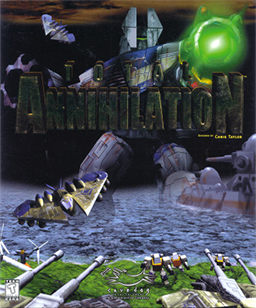
Total Annihilation is a science fiction real-time strategy video game released in September 1997 for Microsoft Windows and Mac OS by Cavedog Entertainment and distributed internationally by GT Interactive. Two expansion packs were released in 1998, The Core Contingency on April 29 and Battle Tactics on July 20, while a medieval-themed spin-off called Total Annihilation: Kingdoms was released on June 25, 1999.
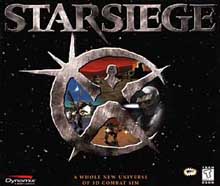
Starsiege is a mecha-style vehicle simulation game developed by Dynamix and released in 1999. Starsiege is set in the Metaltech/Earthsiege universe, which contains its predecessors Earthsiege (1994), Battledrome (1994), and Earthsiege 2 (1996). This universe also includes action game Hunter Hunted (1996), strategy games Mission Force: Cyberstorm (1996) and Cyberstorm 2: Corporate Wars (1998). It also includes the sequelsStarsiege: Tribes and all subsequent Tribes titles. In 2015, this game and the rest of the Metaltech/Tribes series were released as freeware by Hi-Rez Studios, but Battledrome and the Cyberstorm series were not.

Star Wars: Galactic Battlegrounds is a real-time strategy video game set in the Star Wars universe. It was developed by LucasArts. It was released in November 2001. An expansion pack, Clone Campaigns, was released on May 14, 2002, adding two new factions and campaigns. Later that year, both Galactic Battlegrounds and Clone Campaigns were released in a box set, Star Wars: Galactic Battlegrounds Saga.

Legacy of Kain: Soul Reaver is a 1999 action-adventure video game developed by Crystal Dynamics and published by Eidos Interactive for the PlayStation and Windows. A port to the Dreamcast developed by Nixxes Software was released in 2000, serving as Nixxes' first project. The second game in the Legacy of Kain series, Soul Reaver is the sequel to Blood Omen: Legacy of Kain. Soul Reaver was followed by three games, one of which, Soul Reaver 2, is a direct sequel.
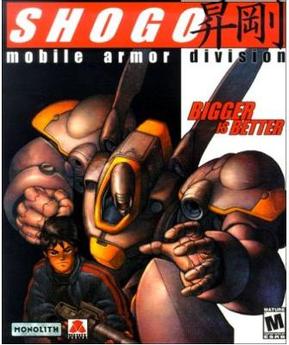
Shogo: Mobile Armor Division is a first-person shooter video game developed by Monolith Productions and published by Monolith and Interplay Entertainment in 1998. The game features on-foot first-person shooter action, and combat with anime-style bipedal mechs. Shogo is a combat system that features the possibility of critical hits, whereby attacking an enemy will occasionally bring about a health bonus for the player. Players take on the role of Sanjuro Makabe, a Mobile Combat Armor (MCA) pilot and a commander in the United Corporate Authority (UCA) army, during a brutal war for the planet Cronus and its precious liquid reactant, kato. Players must locate and assassinate a rebel leader known only as Gabriel. At two pivotal points in the game, the player also has the opportunity to make a crucial decision, which can alter the game's ending.
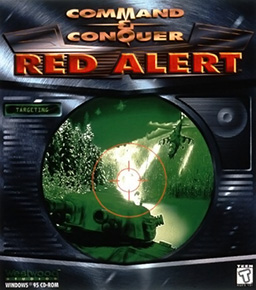
Command & Conquer: Red Alert is a real-time strategy video game in the Command & Conquer franchise, developed and published by Westwood Studios in 1996. The second game to bear the Command & Conquer title, Red Alert is the prequel to the original Command & Conquer of 1995, and takes place in the alternate early history of Command & Conquer when Allied Forces battle an aggressive Soviet Union for control over the European mainland.

War Wind is a science fantasy real-time strategy game developed by DreamForge Intertainment and published by Strategic Simulations, Inc. (SSI). It was released in 1996 for Microsoft Windows and used DirectX 2.0. The game features four unique playable alien races on the fictional planet of Yavaun, each with their own histories, ideologies, and story campaigns consisting of seven scenarios each and an ending unique to that race. The story explores themes of authoritarianism, slavery, revolution, and mysticism. The game also features a map and scenario editor, as well as netplay with up to seven additional players.
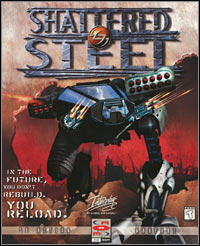
Shattered Steel is a mech simulation game developed by BioWare and published by Interplay Productions for MS-DOS in 1996. It was later ported to Mac OS by now-defunct Logicware. It is notable for the deformable terrain effects, and for being BioWare's first developed game.

Metaltech: Earthsiege is a mecha-style simulation video game developed by Dynamix and released in 1994.

Earthsiege 2 is a mech-style vehicle simulation game developed by Dynamix, produced by Frank Evers (NYPH), and released in 1996. Earthsiege 2 is set in the Earthsiege universe, which contains its predecessors Earthsiege (1994) and Battledrome (1995), as well as the action game Hunter Hunted (1996), strategy games MissionForce: CyberStorm (1997) and Cyberstorm 2: Corporate Wars (1998), simulation Starsiege (1999), and first-person shooters Starsiege: Tribes (1999), Tribes 2 (2001), Tribes: Aerial Assault (2002), Tribes: Vengeance (2004) and Tribes: Ascend (2012).

Crysis is a first-person shooter video game developed by Crytek and published by Electronic Arts for Microsoft Windows and released in November 2007. It is the first game in the Crysis series. A standalone expansion entitled Crysis Warhead was released in 2008, following similar events as Crysis but from a different narrative perspective. At the time Crysis was released, and years thereafter, it has been praised for its milestones in graphical design.
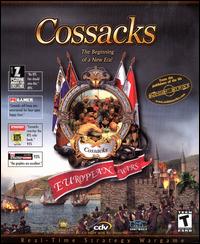
Cossacks: European Wars is a real-time strategy video game for Microsoft Windows made by the Ukrainian developer GSC Game World. It was released on 28 November 2000. The game has an isometric view and is set in the 17th and 18th centuries of Europe. It features sixteen playable nations each with its own architectural styles, technologies and no limit on unit numbers.

Seven Kingdoms II: The Fryhtan Wars is a history-fantasy real-time strategy video game developed by Enlight, released in 1999. Seven Kingdoms II is the sequel to the original Seven Kingdoms game and its updated re-release Seven Kingdoms: Ancient Adversaries.

Command & Conquer 3: Tiberium Wars is a 2007 science fiction real-time strategy video game developed and published by Electronic Arts for Windows, Mac OS X and Xbox 360 platforms, and released internationally in March 2007. The game is a direct sequel to the 1999 game Command & Conquer: Tiberian Sun, and takes place roughly seventeen years after the game's expansion pack Firestorm, in which Tiberium has grown to become a considerable threat to the planet, leading to the world's political borders and territories being remade into zones denoting the level of contamination by the alien substance. The game's story sees the Global Defense Initiative and the Brotherhood of Nod engage in a new global conflict, this time as major superpowers, only for the war to attract the attention of a new extraterrestrial faction known as the Scrin, which attacks both sides while harvesting Tiberium for its own purpose.

Warhammer 40,000: Dawn of War – Dark Crusade is the second expansion to the real-time strategy video game Warhammer 40,000: Dawn of War developed by Relic Entertainment and published by THQ. Based on Games Workshop's tabletop wargame, Warhammer 40,000, Dark Crusade was released on October 9, 2006. The expansion features two new races, the Tau Empire and the Necrons. Including the Imperial Guard from Dawn of War's first expansion pack Winter Assault, a total of seven playable races in this expansion.

Age of Empires (AoE) is a real-time strategy video game based on history, developed by Ensemble Studios and published by Microsoft, and the first game in the Age of Empires series. The game uses the Genie Engine, a 2D sprite-based game engine. The game allows the user to act as the leader of an ancient civilization by advancing it through four ages, gaining access to new and improved units with each advance.

Supreme Commander is a 2007 real-time strategy video game designed by Chris Taylor and developed by his company, Gas Powered Games. The game is considered to be a spiritual successor, not a direct sequel, to Taylor's 1997 game Total Annihilation, and also the Spring remake. First announced in the August 2005 edition of PC Gamer magazine, the game was released in Europe on February 16, 2007, and in North America on February 20.
Archaon, also known as Archaon the Everchosen, is a fictional character in the Warhammer franchise, leader of the forces of Chaos, and one of the primary antagonists in multiple settings and media owned by Games Workshop. He is considered one of the most powerful characters in the Warhammer multiverse, having brought about the fabled End Times, and is a major antagonist in Warhammer Fantasy Battle, Warhammer Age of Sigmar, Total War: Warhammer, and Total War: Warhammer II.

Company of Heroes 2 is a real-time strategy video game developed by Relic Entertainment and published by Sega for Windows, Linux, and OS X. It is the sequel to the 2006 game Company of Heroes. As with the original Company of Heroes, the game is set in World War II but with the focus on the Eastern Front, with players primarily controlling the side of the Soviet Red Army during various stages of the Eastern Front, from Operation Barbarossa to the Battle of Berlin. Company of Heroes 2 runs on Relic Entertainment's proprietary Essence 3.0 game engine.



















